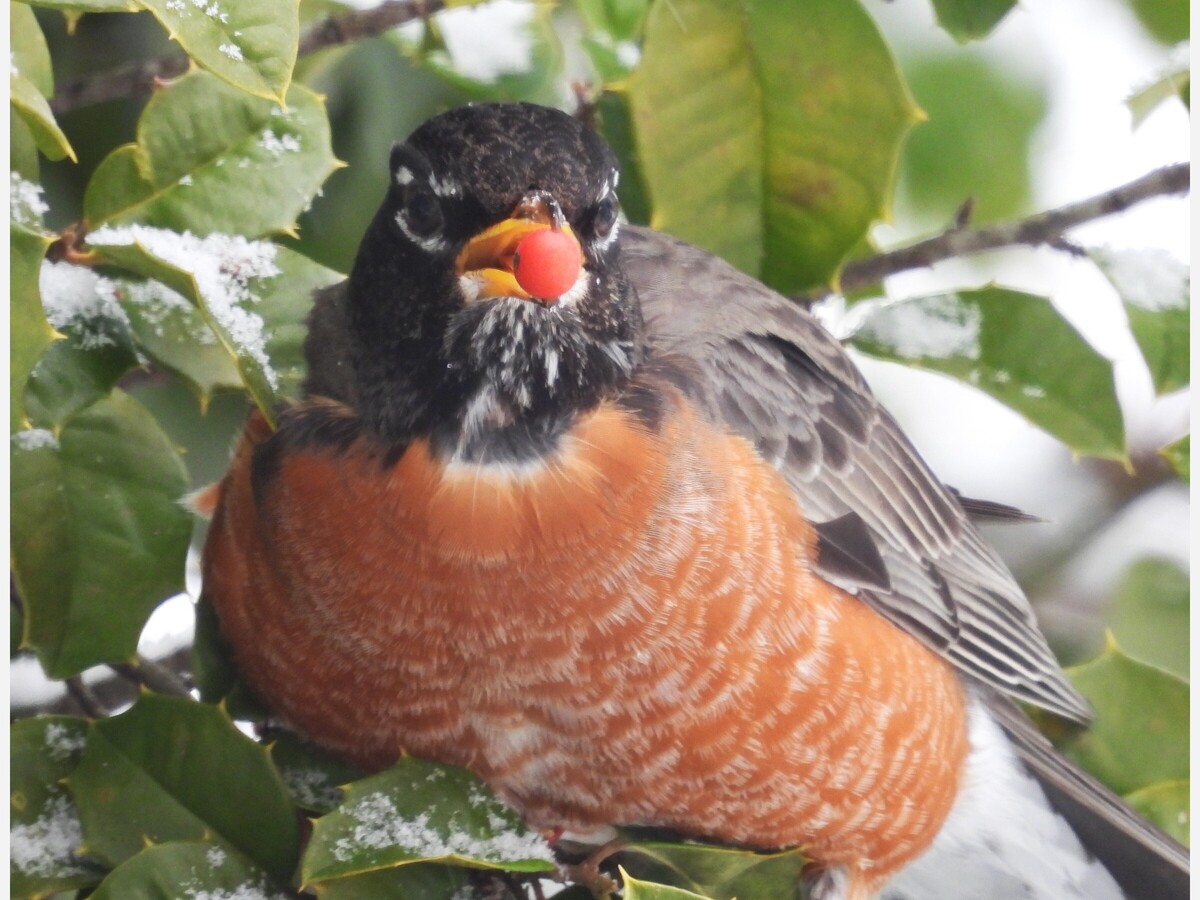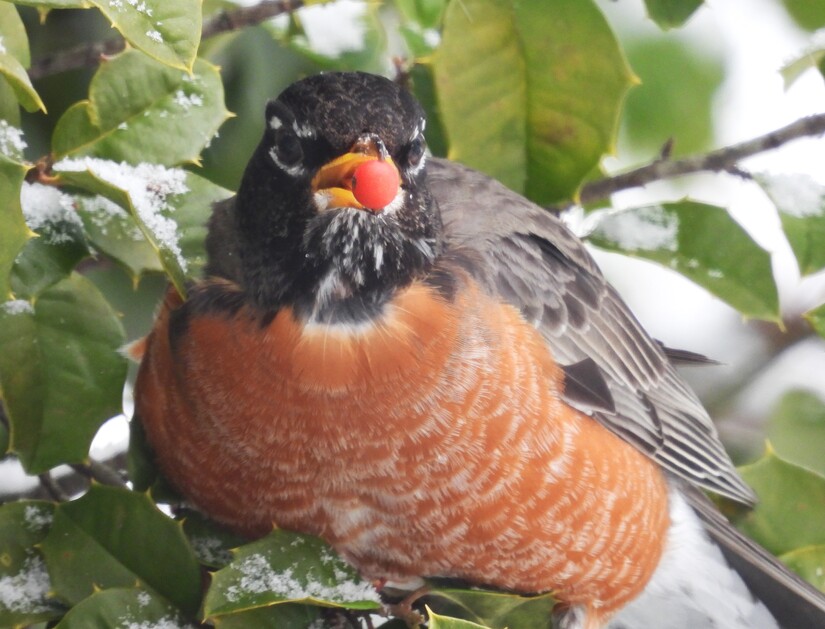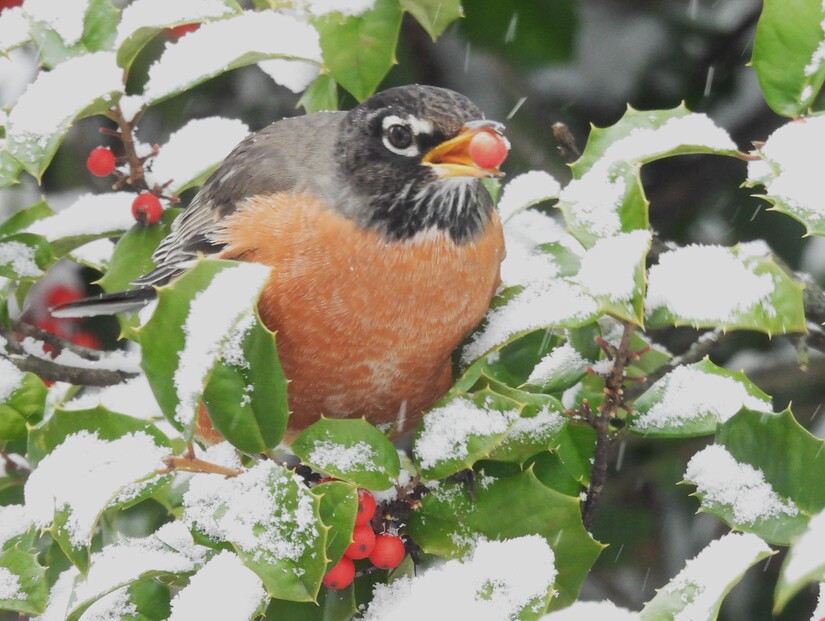Image

by Mike Strzelecki*
The American robin is considered a harbinger of spring. Hearing their early morning whistles and watching them tug earthworms from the moist ground is a sure sign that warm weather is knocking on the door.

But robins disappear in winter. What happens to them? Where do they go? The quick assumption is that they merely migrate south to warmer climates to escape the cold weather and to find fresh food supplies. The actual answer is way more complex.

In the Pennsylvania region, a portion of the robins do migrate south in the fall, not to be seen again until spring. A large chunk of the local robin population, however, actually stay around during the winter. They just change their behavior pattern in several ways and often go unnoticed..

First, while individual robins guard their own territory in spring and pair up to breed, those that remain for the winter gather into large flocks - some numbering in the hundreds and others in the thousands. They do this in part to better protect against predators - more eyes on the landscape. But more importantly, food is scarce in this region in winter, and as a group they have better odds of coming across diminished food sources. The flocks become nomadic within a specific area as they roam woodlands and neighborhoods looking for food sources.

Second, robins are forced to switch up their diet for the winter months. In spring and summer they are mostly carnivorous, feeding primarily on earthworms and bugs. These critters are plentiful in warm weather but disappear with the chill of fall. In winter, robins become vegan. They switch their diet to eating mostly berries. Not traditional fruit berries like strawberries or blueberries which are long gone, but winter berries like chokeberries, juniper berries, crabapples, and holly tree berries. Berries that linger through the winter months. Berries that are very caloric and do not spoil in cold weather. Interestingly, the berries that remain through winter tend to ferment in the warmth of spring, and robins have been observed getting drunk from them.

So to answer the original question: where do robins go in winter? For a good chunk of the local robin population, the answer is nowhere. They are still here, out and about. Except in winter they are no longer bouncing around your yard, cocking their heads and listening for earthworms. They are instead in large flocks cruising the woodland lots and neighborhoods of the region, high in trees, seeking edible berries. It is not where we are used to seeing them, so we often do not notice them.
But in spring, robins will return to being more solitary in nature. They still stake out their territory in your backyard and guard it voraciously. They will go back to yanking confused earthworms from the soil, and waking you up with loud morning birdsong. And laying those lovely baby blue eggs that are among the most beautiful in the bird world.

Recently, a flock of about 300 robins descended on the towering holly tree in our front yard and, over two days, picked it clean of red berries. The photos accompanying this article were taken from that feast.
Mike Strzelecki is a freelance travel and outdoor writer, and 1981 graduate of Boyertown Area Senior High School. He writes from his house in Baltimore, Maryland. In his spare time, he joins his wife on adventures around the country observing and photographing birds.